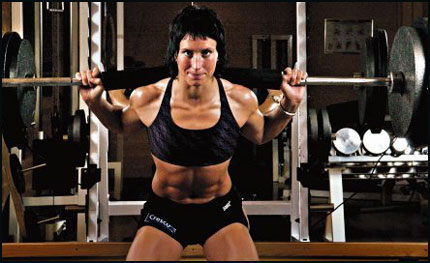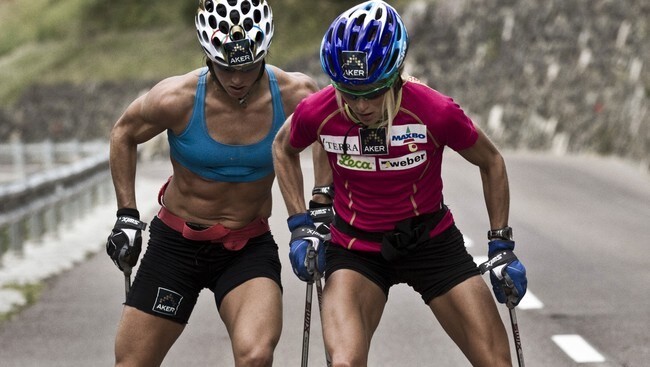Bringing the successful thread of DBX, onto here. While the target group might be scarcely older than the prior DBZ CCers (), exercise should regardless be on everyone's week plan. So share your latest activities or accomplishments, and spread knowledge based on your experience.
As for me, I am an active volleyball player who previously pursued great overall strength, while now am more focused on a mix of plyometrics (ability to exert maximum force in a short time, as in jumping high) and weight lifting. Figured I would contribute with some more general guidance. A program for those who wish to just gain strength.
The Best Way to Start Strength!
Full-Body Split:
- Requirements: A gym license
The theory behind full-body split is as follows: Unless you are a professional specialized athlete, you have predominant muscle groups that are large in size and strength, that make up the essence of your body build. By targeting exercises that work multiple regions of the body, it is possible through a split program (A-B) to cover your entire base with just two different programs.
Split A:
- Barbell Squat 8 reps x 3 sets [P] 10-12 reps x 4 sets [S]
- Barbell Bench 8 reps x 3 sets [P] 10-12 reps x 4 sets [S]
- Pull-up Consecutive reps until failure (if none, jump to upper position and hang as long as you can endure) x 3 sets
- Dumbbell Shoulder Press 8 reps x 3 sets [P] 10-12 reps x 4 sets [S]
Split B:
- Barbell Deadlift 8 reps x 3 sets [P] 10-12 reps x 4 sets [S]
- Incline Dumbbell Press 8 reps x 3 sets [P] 10-12 reps x 4 sets [S]
- Chin-up Consecutive reps until failure (if none, jump to upper position and hang as long as you can endure) x 3 sets
- Arnold Press [P] 8 reps x 3 sets [P] 10-12 reps x 4 sets [S]
The split is completed so that there is one program every other day, with one day reserved for cardio. E. g. (Monday A, Wednesday B, Friday A, Sunday Cardio, Monday B, Wednesday A, Friday B etc.). The [P] stands for power weeks, while [S] stands for speed weeks. The power weeks require heavy resistance and long breaks in-between sets (2-3 minutes), while speed weaks have lower resistance and shorter breaks in-between sets (1 minute). The purpose of this is to shock your body, and transform slow fibers to agile fibers and ensure lengthy improvement.
Tips:
- A spotter, someone to assist in case of failure to complete a repetition, is crucial for bench press, and beneficial for dumbbell press and barbell squats. Teaming up with a partner is also an easy way to keep track of motivation both before going to the gym and while exercising.
- Not every day at the gym is fun, yet consistency is important. Tell yourself to go regardless, and if you have a bad day where you lift less than last workout, be sure to complete anyway.
- The first two weeks (or 3 walkthroughs of the programs if you like) should be done with minimum weight to acquire proper form and technique. The danger with improper form and technique, is that you stress the wrong pair of muscles, not reaching the results you have come to expect, and secondly you buckle and can get into stances that are no-good and cause of injury over long term. Starting slow is essential, and you will soon find yourself at a level where your weights match your "macho standard" - only this time with proper technique, and the right terms to get properly strong.
- For the basic exercises, I largely recommend Mark Rippetoe's "Starting Strength". It can be downloaded as a PDF from you-know-where, or bought online, and is a comprehensive and detailed look into proper form and technique. Especially important for squat, deadlift and bench. The three most profitable strength exercises in existence.
- With an improved workout regime, your energy consumption will increase substantially, and your need for food accordingly so. Looking into which foods are healthy for development, is not a shabby idea. Also consider protein shakes after exercise. These work in the manner that the protein uptake is at its largest 20 minutes after a workout, and needed to build up muscle throughout the restitution period.
- Cardio more than one day a week is excessive if you plan to build muscles. It is there to give definition to your muscles and burn fat. I recommend 4x4 min intervalls, with high intensity throughout each interval. That has scientifically proved to tear down muscle mass less than long runs, whereas the fat burning continues even after ended exercise, giving the best of two trades. PS: I used to run 3 times a week before, but even when I substituted two of those workouts with strength, I remained at the same level thanks to the gym exercises in this program.
- Fitocracy.com is an excellent site for tracking your exercises after a workout, and hence calculate and plan improvements of your own.
- Stretching is awesome if you want to not get stiff after training strength!
--------------------------------------------------------------------------------------------------
So that was part one of the thread. The educational bit. Now for the more traditional one, stating what I have done today:
- Plyometrics with cone jumps, depth jumps and side jumps.





 Reply With Quote
Reply With Quote








